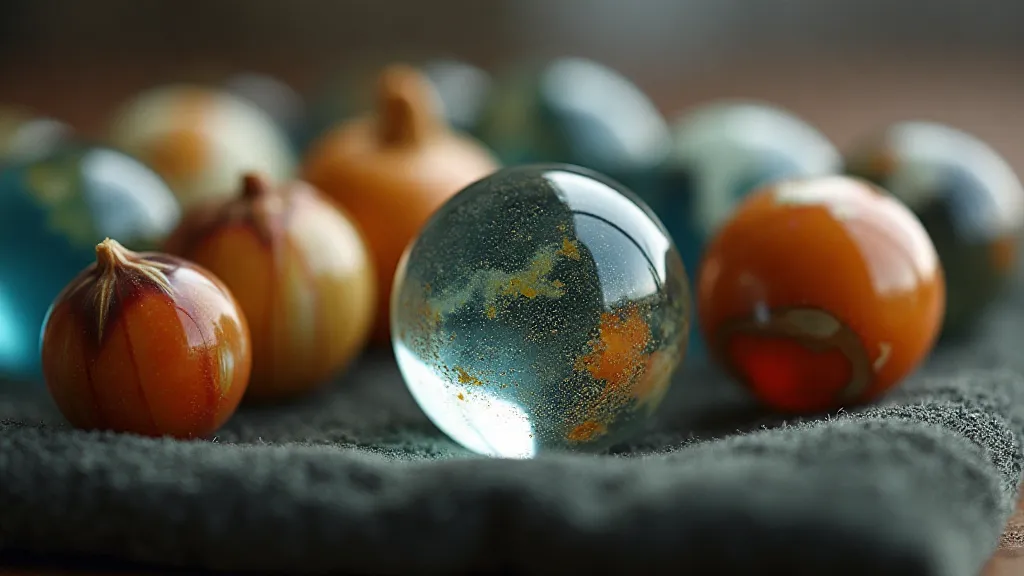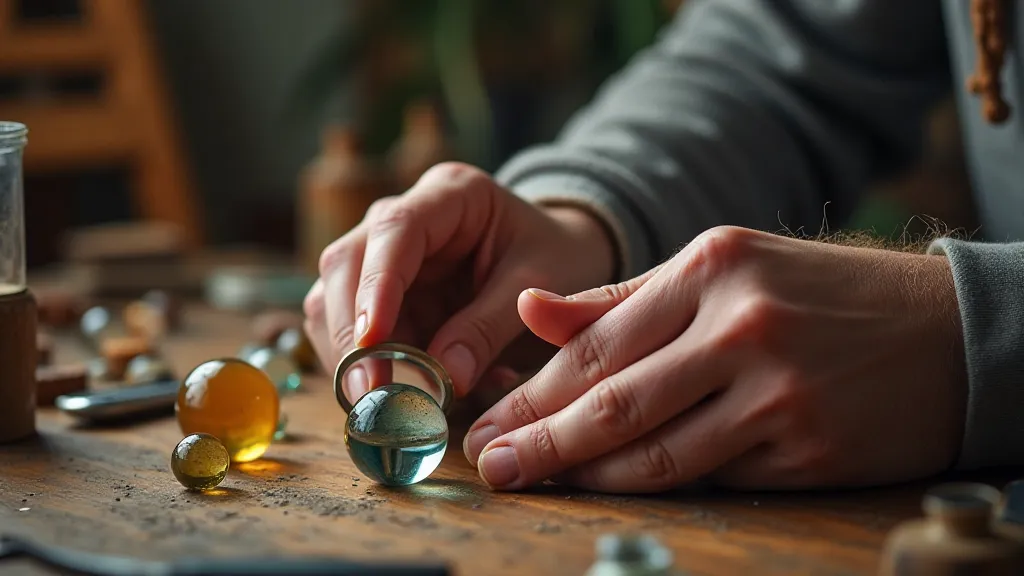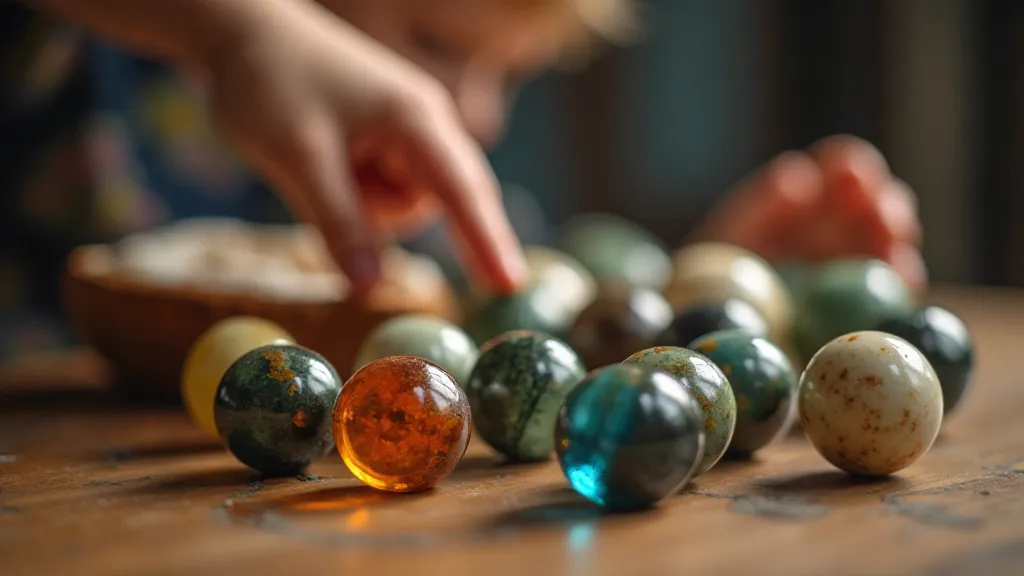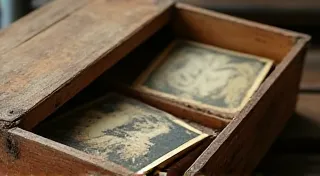The Collector's Paradox: Balancing Passion and Preservation
The cool weight of a hand-sized glass marble, swirling with vibrant colors, is a sensation that transcends age. It's a connection to a simpler time, a tactile link to craftsmanship long vanished. For marble collectors, this isn’t just about owning pretty objects; it's about safeguarding fragments of history, preserving a tangible echo of childhood wonder. But the pursuit of collecting, especially of antique marbles, presents a subtle, often overlooked paradox: how do we balance the passionate desire to showcase and share our collections with the vital need to protect them for generations to come?
My own journey into marble collecting began, as many do, with a single, unremarkable find – a cloudy swirl marble unearthed in my grandmother's garden. It wasn't particularly rare, nor especially beautiful, but it sparked something within me – a curiosity about its origins, its history, and the hands that had once held it. It led me down a rabbit hole of forgotten factories, intricate manufacturing processes, and the evolving aesthetics of childhood play.

The Allure of the Past: A History Woven in Glass and Clay
The history of marbles is surprisingly rich. While simple clay marbles have existed for millennia – found in Roman and Egyptian archaeological sites – the real explosion of artistry came with the rise of glassmaking. The 19th and early 20th centuries witnessed a golden age for marble production, particularly in the United States. Factories sprung up across the country, each developing unique techniques and styles. Names like Akro Agate, Vitro, and Champion became synonymous with quality and innovation.
Imagine the conditions in those factories: the clatter of machinery, the heat of the furnaces, the skilled laborers meticulously shaping and coloring molten glass. Each marble represents hours of labor, a testament to human ingenuity and the burgeoning industrial revolution. Early marbles were often handmade, resulting in imperfections that, to a modern eye, are simply character marks – a story etched into the glass.
Clay marbles, though less flamboyant than their glass counterparts, hold their own significance. They offer a glimpse into a more rustic form of childhood play, often produced locally and reflecting regional materials and artistic sensibilities. They remind us that even seemingly humble objects can hold a profound historical resonance.
The Collector's Dilemma: Display vs. Preservation
The heart of the collector's paradox lies in the tension between wanting to display our treasures and safeguarding them from harm. We are driven by a desire to share the beauty and history we’re uncovering, to inspire others and to educate. A beautifully arranged display, bathed in soft lighting, can be a source of immense satisfaction, a curated window into a bygone era. But constant exposure to light, air, and handling inevitably takes a toll.
Light, particularly ultraviolet radiation, causes fading and discoloration. Air, with its inherent moisture and pollutants, can lead to clouding and surface degradation. And, of course, the simple act of handling, even with the utmost care, can introduce scratches and chips – irreversible damage that diminishes the marble’s value and its story.
Many collectors opt for elaborate display cases, climate-controlled environments, and archival-quality storage materials. These measures are certainly effective, but they also create a barrier, a sense of inaccessibility. Is the true value of a collection lost when it’s locked away, unseen and unappreciated?
Navigating the Tightrope: Practical Steps for Preservation
The key to resolving this paradox isn’t to choose one extreme or the other, but to find a balance. Here are a few practical steps collectors can take to minimize damage while still enjoying their collections:
- Limit Exposure to Light: Use UV-filtering glass or film on display cases. Rotate marbles periodically to minimize long-term exposure to direct sunlight.
- Control Humidity and Temperature: Stable conditions are crucial. Avoid extremes of heat and cold, and keep humidity levels consistent.
- Handle with Care: Use cotton gloves when handling rare or fragile marbles. Avoid abrasive cleaning methods.
- Archival Storage: Store marbles in acid-free, archival-quality boxes or bags.
- Documentation: Keep detailed records of each marble, including its origin, history, and condition. This isn’t just valuable for insurance purposes; it also contributes to the ongoing preservation of the collection’s knowledge.

The Legacy of Play: Passing on the Wonder
Ultimately, the most important aspect of preserving antique marbles isn’t just about maintaining their physical condition; it’s about transmitting the wonder and the story they embody to future generations. It's about sharing the joy of discovery, inspiring curiosity, and fostering an appreciation for the artistry and history embedded within these small, seemingly simple objects.
Perhaps a portion of a collection could be entrusted to a museum or historical society, ensuring its accessibility to a wider audience. Or maybe a family tradition of sharing marble stories and demonstrating proper handling techniques can be passed down through the generations.
The collector's paradox isn't a problem to be solved, but a continuous negotiation—a dance between passion and preservation. By embracing this delicate balance, we can ensure that the legacy of play, and the stories contained within these captivating spheres of glass and clay, endure for years to come.






